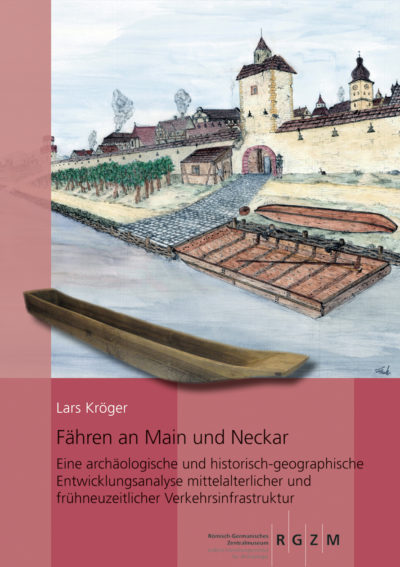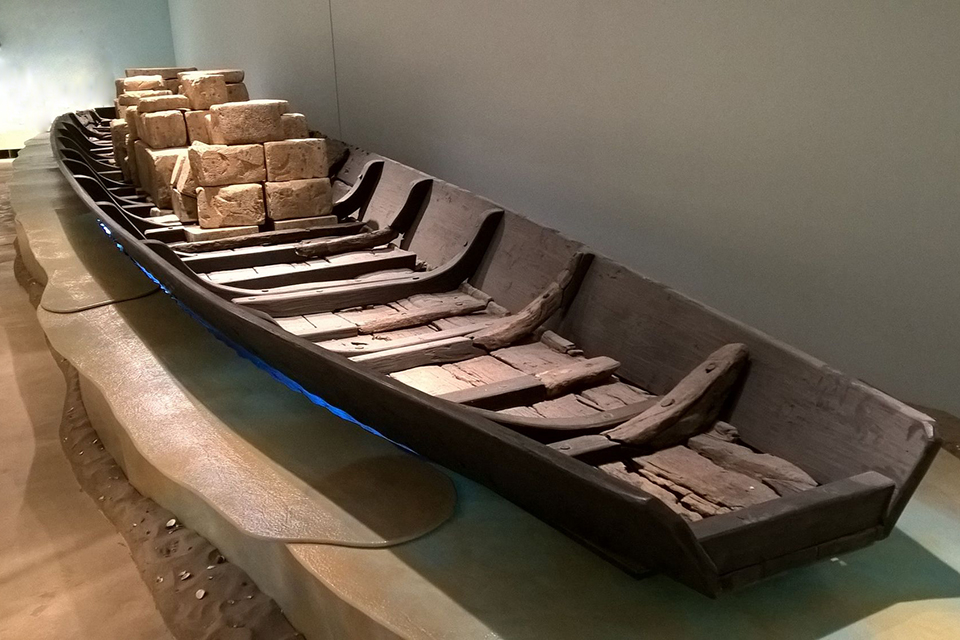How to cross a major river? Do you look for at ford? Or do you negotiate with the local ferryman? And who regulates their business? New books seeks to answer these questions as regards the German rivers, Neckar and Main.
Fähren an Main und Neckar
Lars Kröger
Series: Römisch Germanisches Zentralmuseum, Monographien des Römisch-Germanischen Zentralmuseums
Bandnummer: 160
Schnell & Steiner 2023
ABSTRACT
 Rivers such as the Main and Neckar in Germany are the heart of many cultural landscapes. They connect spaces and enable a variety of cultural and economic developments along their banks. At the same time, they form a barrier that is not easy to cross. Especially at navigable river sections, a reliable infrastructure needs to be provided that does not disturb or only minimally interferes with the usability of the river. Thus, river crossings represent bottleneck situations in the road systems. Further, they possess a political and monetary value demanding regulation and control.
Rivers such as the Main and Neckar in Germany are the heart of many cultural landscapes. They connect spaces and enable a variety of cultural and economic developments along their banks. At the same time, they form a barrier that is not easy to cross. Especially at navigable river sections, a reliable infrastructure needs to be provided that does not disturb or only minimally interferes with the usability of the river. Thus, river crossings represent bottleneck situations in the road systems. Further, they possess a political and monetary value demanding regulation and control.
While prehistoric periods offer fragmented information, the evidence from the Middle Ages and Early Modern times shows a profusion of solutions to a complex problem.
In most cases, the use of ferries dominated. The present study analyses available archaeological and written sources for Southern Germany’s Main and Neckar river systems. These sources provide a comprehensive picture of the development of river crossings. The archaeological analysis is based on the unique number of 121 log boat finds from the working area. In most cases, they were parts of complex ferry constructions. These log boats vary locally and temporarily and may be compared with finds from other European regions. Also, they allow for reliable technical reconstructions.
Further, written sources from the Middle Ages and later concerning 241 river crossings in the area have been examined and evaluated to solve questions about ownership, legal basis and the uses of ferries and bridges. These texts represent a complex system of rights and duties concerning liege lords, ferrymen and ferry passengers.
Finally, the study shows that fords – shallow places with good footing where a river or stream may be crossed by wading – did not play the role hitherto suspected. This study offers a profound glimpse into regional and supra-regional transportation systems in the heart of Middle Europe.
ABOUT THE AUTHOR:
Lars Kröger works as post.doc at the Deutsches Schiffahrtsmuseum, on the DFG-Projekt Im Netzwerk fluvialer Häfen. The book is based on the author’s dissertation.


